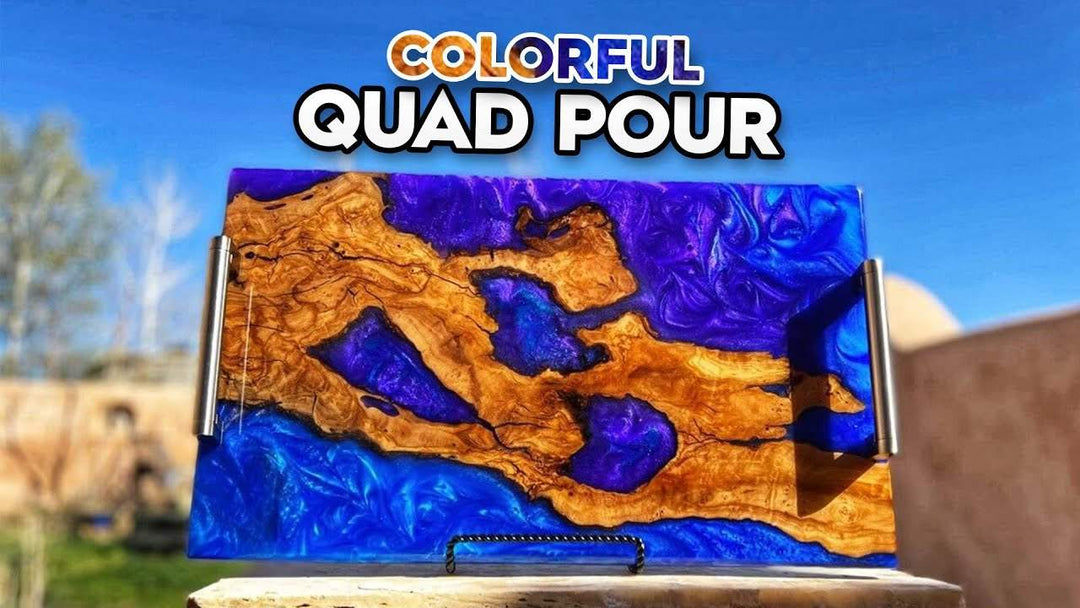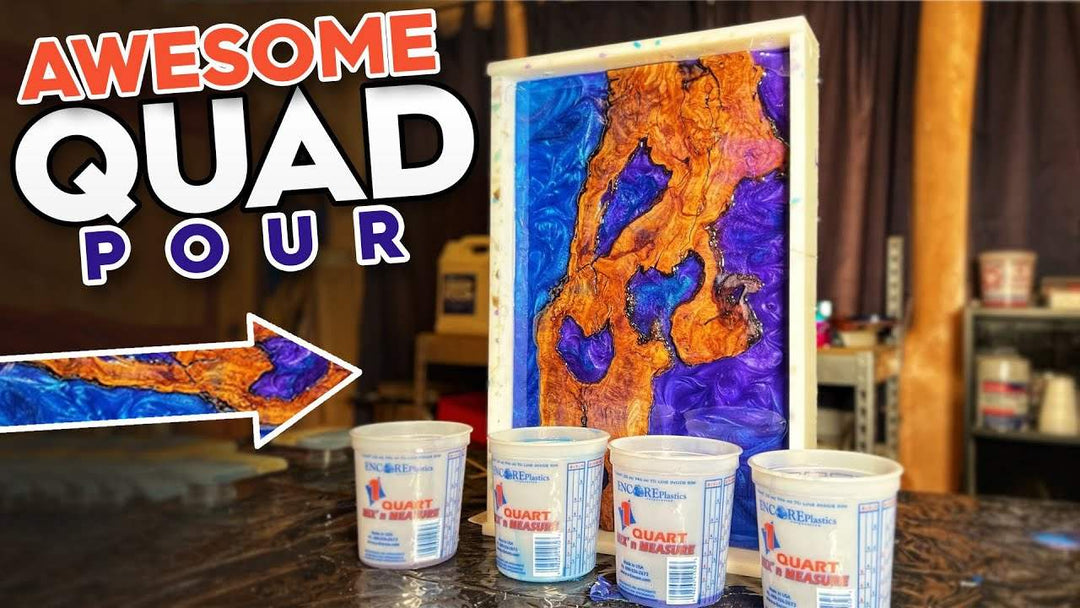
How to Epoxy a Table Top Like A Pro
Want to create an epoxy project like a pro? If you’re working with table top epoxy, it’s important to know that the mixing and pouring process can make or break your project! In this tutorial, we’ll show you how to use it for the best possible results.
Skill Level: Beginner/Intermediate/Expert
Estimated Working Time: N/A
What You’ll Need:
- Upstart Epoxy Table Top Resin
- Wood Surface
- Protective Gloves
- Protective Glasses
- Buckets
- Heat Gun
- Sander
- Polyurethane
Setting Up Your Workspace
Let’s walk through the entire process of using table top epoxy- starting with what comes with your order. You’ll have Part A and Part B of the epoxy resin, which pours at a 1:1 ratio. You’ll also have a plastic spreader that helps you spread the epoxy across the surface, ensuring even coverage. Your foam brush will allow you to take the epoxy down the edges of the tabletop to remove any drips. Finally, you’ll have two stir sticks that'll help you mix the epoxy. We also have our user guide, directions, and helpful hints you might need along the way. Let’s get started!
Now, we are preparing to work with the epoxy. To start, grab some buckets that you can use to mix Part A and B- you can get these from your local hardware store. Before mixing, wipe them down, removing any possible pieces of dust or film. Leaving any behind will make them get stuck in your resin, and we don't want that for the final epoxy wood finish of your table!
Next, make sure you're wearing rubber gloves and protective glasses. Epoxy resin is a chemical, and we want you to be safe as you work with it.

Calculating How Much Resin Your Table Needs
It’s time to calculate how much epoxy we're going to need. To do this, we need to get the length and the width of the surface and multiply those two numbers. Next, we need the depth of the pour that we're going to do, as we are going by volume. To get that, we’ll multiply our first answer by 1/16, then convert the inches into volume. Once you get your answer, double check for correct calculations! Watch the Youtube video above for more in-depth instructions.

Pouring & Mixing Your Epoxy
Let’s mix this first pour! Pour Part A into a container, using the plastic utensils the epoxy comes with. You will see some bubbles appear in the mixture, but don’t get nervous! Most of them will be released during the curing process. As the epoxy heats, the bubbles escape and come to the surface. Any leftover bubbles will get hit with a heat gun when we do our flood coat.
Next, pour Part B and start mixing it together as it's going in. We suggest mixing table top resin by hand- it’s a little more tedious, but it will prevent bubbles from accumulating. Mechanical mixers are fine, but you might accidentally whip the epoxy too much, which brings an exorbitant amount of bubbles. Keep going until the mixture becomes clear! Scrape the sides and the bottom of your bucket to make sure you get all parts 100% combined. If Part A and B are completely integrated, you're going to have a crystal clear pour!

First Coat
Your first pour will be your flood coat. Think of the flood coat as the main pour of your project, the star of the show! Pour over the surface and make sure to spread it around the sides. Next, we're going to use this plastic spreader to help spread the epoxy around the surface of the table. When that’s finished, wipe those sides to remove drips. Feel free to apply as many flood coats as you’d like, especially if your surface is a porous wood. Just add extra flood coats AFTER your seal coat, which we’re getting to next.

Second Coat
After the flood coat, you’re going to do a seal coat. The purpose of doing this is to seal all of the air pockets, so that air bubbles don't reappear. Repeat the same process you did with the flood coat. Remember, this epoxy is self leveling and does a lot of the work on its own. Remove any giant mounds if you have them of course, but let the product do its job and spread it across your surface. Before you finish, go underneath the surface with your foam brush or clean rag to remove any leftover drips. You’re looking for a nice, smooth edge here.

A Smooth Finish
To start the finishing process, you’re going to run a heat gun over the surface to break some of the surface bubbles to make sure it stays flat. Stay a few inches above the surface, that way you don’t dip the heat gun into the epoxy as it's curing. This also helps you control the level of heat more, as you don’t want to overheat the surface. If you overheat the surface, the epoxy will scorch and ruin your project- the only way to fix that is to remove all of the old epoxy after it cures and then do it all over again.
As you lightly run the heat gun over the project, you’ll see those surface bubbles pop. As your project cures, you can come back periodically to pop any other bubbles that appear.
As we allowed the project to cure, we decided to skip an extra flood coat because our work was totally level, had no surface bubbles, and the table top epoxy penetrated and sealed the wood appropriately. Once the top of the surface cures, you can it upside down and sand any residual drips then tape off the edges.
Lastly, add a coat of polyurethane to seal the bottom side of the table. This step is important because humidity is going to make the wood surface flex and move, so you want to completely seal your resin to not let the humidity in. Once you have finished that, your table top is ready to be installed!





